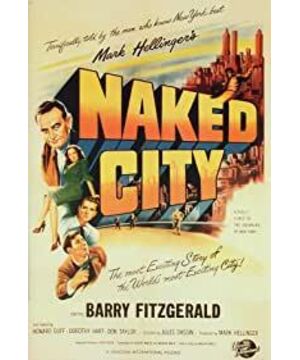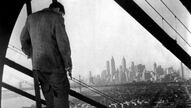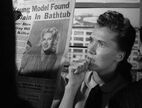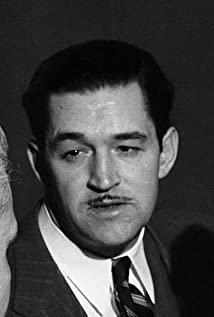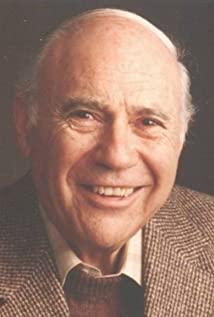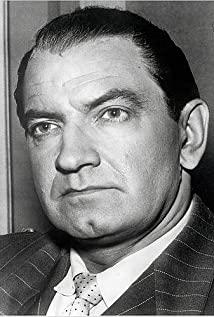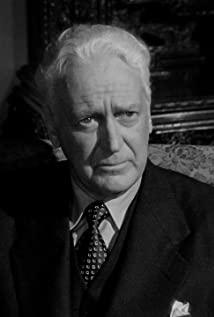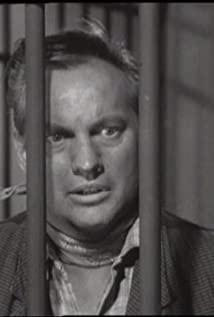The whole story, changing locations, characters and related backgrounds, landmarks, etc., is very similar to today's cities, such as Shanghai. Even social criticism can be copied.
At the end, it is still the dark and dark morning of New York City, and the narrator says:
"It's one o'clock in the morning, and it's the city again. This is the light of the city, and this is the blond named Betry (killed blond) Beauty's child's dream, her passion is over. Her name, her face, her story, are worth five cents in these six days. There will be new events tomorrow, and some will still be Think of Jane Dexter (the name of the slain beauty later changed), she will not be forgotten, not completely, forgotten. In this naked city, there are eight million stories, It's just one of them." One
after another, the bright lights of New York; the stacks of freshly-baked newspapers in the printing house that are about to flow out of the city; the brooding old detective on the terrace; A liar rich girl; a liar behind bars; a young police officer full of passion and justice and his wife watching the newspaper recording the case in front of the subway station; the dead girl's parents far away in the town, on the porch of their home I was fascinated; by the street, there were old newspapers I had read. The cleaners came and swept the newspapers with the pictures of the murdered beauties into the garbage truck, and walked towards this still bright and prosperous city, as if nothing had happened. This naked, nightless city.
The disc at hand is the famous "CC Collector's Edition", D9, with a lot of tidbits. Before, when I bought a movie, I sometimes asked if there was a D5, because I didn't care much about the sound effects of the movie, and I didn't think I must have time to watch those extras that should be very precious.
The commentary track of this disc happens to be one of the screenwriters of this movie, Marvin Ward. Out of curiosity and love for the screenwriter, I miraculously watched the movie again under the guidance of this commentary. Afterwards, I couldn't help but watch the live video of Dassin's interview in Los Angeles in 2004 (the handsome guy is old, but his demeanor, I think, must not be reduced from that year. Interestingly, why, the more I watch Dassin, the more , the more like Barry Fitzgerald before? Of course, the better-looking Fitzgerald):
There are many tidbits of the film in Wald's comments and Dassin's interview, which are very interesting, to list a few, As follows:
1. In the movie, Barry Fitzgerald, who plays the old detective, turned down the role at the beginning because he thought he didn't look like a detective, and the detective should be like Humphrey Bogart. Someone who can run and shoot. But Wald convinced him that when he was living in the police station, the detectives didn't fight, and they were interrogating prisoners most of the time. So Barry agreed, and with this role, he subverted the roles he played in the past, such as pastor and doctor.
2. In American movies, the pattern of the two police detectives starts from this movie.
3. In the film, the description of the disparity between the rich and the poor in the city of New York made the upper management of "Universal Pictures" worried at that time. Because it was the era of the "McCarthyism" in the United States. While the film was well-received, a Hollywood investigation was launched, and many people, including director Jules Dassin, were blacklisted.
4. In the film, those meaningful voice-overs were recited by the film's producer and investor Mark Hellinger himself. (It's really cultural!) And the tone of the film's groundbreaking use of black and white photography and documentary style was also set by Hellinger. In the narration at the end of the film, the statement about "eight million stories" was repeatedly quoted.
5. Later, Hellinger's own story also corroborated the famous claim that when the film was finished, Hellinger died a week after attending its Los Angeles premiere in December 1947. . After his death, Universal didn't know what to do with the film, and some of Universal's upper echelons, worried about Jules Dassin on the blacklist and one of the film's screenwriters, "Hollywood Ten" Albert T. Maltz would have cast an unwelcome political overtone on the film and had tried to ruin it. But since the film was made by Hellinger himself, Universal and Hellinger still had a contract ahead of him, and Hellinger's successor told Universal that they had to fulfill the contract and distribute the film. (Even back then, the U.S. contract worked!) Universal was forced to release the film, and they were shocked by the public's reaction to the film. They didn't expect it to be a success. They didn't even spend a penny to promote the film, but the film won two Oscars and three nominations, and was a huge hit with audiences.
6. The film creatively integrates the new element of "chasing" into the detective film, and organically combines the style of the documentary with the detective novel.
7. This movie shows the police as hard-working workers, which has never been seen in previous Hollywood movies.
8. Marvin Ward consulted a lot of files at the police headquarters, so many of the details and elements in the film are derived from reality. Including the end of the film, the murderer Garza meets the impulsive and inexperienced young man, and he grabs the policeman's gun. At this time, the audience thinks that Garza will kill the policeman. It is Wald who "lives under the police station". His experience taught him that the smartest criminals do not kill the police because they know that if they do, the police will pursue them at all costs until they are brought to justice.
9. The last scene of chasing the murderer is a great example of cross-cutting to create excitement. The film's editor, Paul Widwicks, also won an Oscar for best editing.
10. In the last paragraph of the film, the murderer Garza has nowhere to go and escapes on the Williamsburg Bridge, which is also a bridge scene designed by Wald in advance, with good visual effects. Especially when Garza, who is almost dead, stands on a high bridge and looks down. On a huge tennis court not far away, people are still playing tennis leisurely, and what they don’t know is that it is just above their heads. , a person's life has come to an end. This scene left an unforgettable impression. Wald told Dassin, you are lucky, the tennis players are all wearing light-colored T-shirts (so, this high-altitude overhead shot is so powerful!), Dassin laughed and said, I have thought of it for a long time , those are extras I arranged, wearing white T-shirts.
11. Dassin was also the first director to shoot on location in New York. He thought of a lot of ways to hide the camera in the downtown area to shoot, such as using a special glass curtain wall, which can shoot the outside, but the outside can't see the inside. But one of his favorites, and one that he thinks applies to any other film, is that in this film, there is a scene shot in a hotel, and a lot of passersby come around to watch them shoot. After the actors were in place, Dassin had a member of the crew, with a ladder and a flag, walk to a place 200 yards away from the filming location, climb the ladder, and shout, "We, America, need equality and freedom. ", he said, this time, the crowd of onlookers rushed over to see the man, and we can start shooting with peace of mind.
View more about The Naked City reviews


